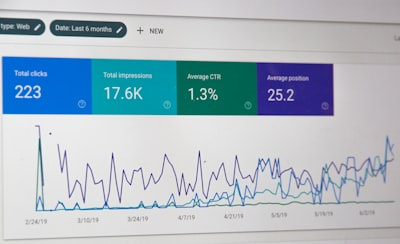SERP analytics might have seemed like just another buzzword in the vast sea of SEO jargon.
But it’s not. Imagine standing at the edge of a cliff, overlooking an ocean of search queries and rankings—this is what analyzing SERPs feels like today. It’s thrilling yet overwhelming.
From knowledge panels that steal the spotlight to local packs that draw users in with magnetic force, understanding these features can be akin to holding a map where X marks spots overflowing with treasure.
SERP analysis isn’t about taking wild guesses or making hopeful stabs in the dark; it’s about precision.
Unraveling the enigmatic signals from Google and converting them into strategies we can use feels like cracking an ancient code.
Vital Summary:
- Learn how analyzing Search Engine Results Pages (SERPs) can unlock online success by guiding SEO strategies.
- Discover the importance of recognizing and leveraging various SERP features like featured snippets and local packs to boost visibility.
- Explore how to optimize content for search intent, incorporate relevant keywords, and conduct competitor analysis for effective SEO.
- Learn techniques to improve click-through rates (CTR) in search results by optimizing title tags, and meta descriptions, and leveraging rich snippets.
- Understand the significance of tailoring content to match user queries, including crafting diverse formats and using smart tools for insights.
Understanding SERP Analysis for SEO Success

What is SERP Analysis?
SERP stands for “Search Engine Results Page” — the pages of results that pop up after you’ve hit enter on a Google search.
It’s like opening a treasure chest but instead of gold, it’s filled with websites, ads, and those nifty little boxes answering your exact question.
A SERP analysis is us playing detective to figure out how these sites got their golden tickets to rank well for keywords we care about.
Believe me, in the SEO realm, this detective work can often morph into a treasure hunt of its own.
Identifying Key SERP Features
The stage is set with blue links galore – but wait. There’s more than meets the eye here.
You’ve got featured snippets stealing the spotlight; knowledge panels offering quick insights without even clicking through; image packs showing rather than telling; and, let’s not forget, video carousels making things lively.
Each feature plays its part in grabbing attention and driving clicks – understanding them gives us clues on how to get our content front and center.
Learn how to create a content hub that will boost your content here!
The Role of Featured Snippets in SERP
Ahh, featured snippets – they’re like VIP passes at an exclusive club where everyone wants in because being there means you’ve made it big time.
They sit right at the top answering questions directly related to.
But why do they matter so much? Because snagging one often leads to a boost in traffic without needing paid ads or fighting tooth-and-nail through traditional rankings.
To win this coveted spot, your content needs precision-targeting towards user queries while also delivering value quicker than Usain Bolt runs 100 meters.
With everything from serendipitous SERP features appearances by local packs all cozy-like next door to your business listing online – understanding SERP analysis, identifying key features such as “featured snippet”, or dissecting what users mean when they punch their desires into that magical search bar isn’t just helpful—it’s critical.
Analyzing Competitor’s SERP Positions
So, you’ve got your eye on the top spot in Google? Well, first things first. How about we dive into the strategies your rivals are employing?
Yes, I’m talking about analyzing your competitor’s positions in the Search Engine Results Pages (SERPs). It sounds fancy, but it’s not rocket science.
You want to start by identifying who exactly these competitors are. Sometimes they’re not who you think.
Once identified, use tools like SEMrush or Ahrefs. These platforms show where your rivals rank for keywords you’re eyeing up.
Optimizing Content for Search Intent
Gone are the days of stuffing articles with keywords and hoping for the best. Now, it’s all about matching your content with what people are actually searching for – their intent.
- Informational Intent: Folks looking to learn something new.
- Navigational Intent: Users trying to get to a specific site or page.
- Transactional Intent: Ready-to-buy users hunting down where to make their purchase.
- Inquiry-Based Searches: Questions that need answers pronto.
To nail this part of your strategy, put yourself in the searcher’s shoes.
What’s the underlying desire driving their search request? Use insights from features like “People Also Ask” and related searches at the bottom of Google’s results page as clues.
A deep dive into search intent can be found over at Moz’s guide on understanding searcher intent.
Incorporating Relevant Keywords for Higher Ranking
Last but definitely not least is weaving those all-important relevant keywords into your content masterpiece.
But hey—don’t just sprinkle them randomly, likeparmesan,n on pasta. Make sure they fit naturally within your text; context is key here.
We’ve talked before about kicking off keyword research: figuring out which words and phrases align most closely with both our offerings and our potential customers’ needs.
If done right, this will have folks flocking to visit faster than ducks spotting breadcrumbs.
All jokes aside, though—SEO isn’t a one-and-done deal; it evolves as quickly as TikTok trends change outfits.
The good news? With some elbow grease and smart strategies drawn from thorough SERP analysis…well let me tell ya: You’ll be watching those rankings rise quicker than you can say “algorithm update.”
So, buckle up and get ready to dive deep into the world of SEO optimization—it’s going to be an exciting ride.
Mastering Search Intent for Better SERP Performance
Types of Search Queries and Their Intentions
Ever wondered why some content ranks higher than others? It’s not always about who spent more on their SEO budget.
A lot of times, it boils down to understanding search intent. Let’s break it down.
- Informational: This is where curiosity reigns supreme. People are looking for answers, be it “How to tie a tie?” or “What is blockchain?”. They’re not necessarily looking to buy something…yet.
- Navigational: Here, users already have a destination in mind. They type in specific brand names or products because they know exactly where they want to go.
- Transactional: The wallet is out. Users with transactional queries are ready to make a purchase or complete an action like downloading an app.
- Inquiry-Based Commercial Searches: These folks are on the fence. They might compare products or look up reviews before making that leap into buyer territory.
We’ve got our map; now let’s navigate through these intentions like seasoned explorers.
Matching Content with User’s Search Intent
Gone are the days when stuffing your article with keywords was enough to climb the Google ladder.
Now, if you really want that top spot, you need to match your cape with your superhero—your content with user intent.
To start, analyze those blue links sprawling across Google’s first page whenever you enter a target keyword related specifically to what people seek online today versus yesterday (because yes, trends change faster than fashion).
- The first step? Dive deep into identifying what kind of question each keyword represents: informational?, navigational?, transactional?. Once you’ve got this figured out – tailor-make that costume so perfectly even Clark Kent would be jealous.
- Mix and mingle among various types of formats – blogs could work wonders for information seekers while detailed product descriptions might lure in those ready-to-buy browsers.
- Last but never least: don’t just meet expectations – exceed them by providing value no one else does – answer questions they didn’t even know they had.
Leveraging SERP Features to Enhance Visibility
Understanding Different SERP Features and Their Impact on SEO
Gone are the days when SEO was all about getting those coveted blue links at the top of Google’s search results.
Now, we’ve got a whole new playground with SERP features that can really jazz up how your site shows up in searches.
Let’s dive into some of these game-changers and see why they’re more than just pretty faces.
- Knowledge Panel: This is like having your own VIP section on Google’s search page. It pulls together loads of info about businesses or people right beside the search results. If you’re looking to stand out as an authority, this is where you want to be.
- Local Pack: Ever googled a service “near me” and saw a map pop up with listings? That’s the local pack working its magic for local businesses, showing users exactly where they can find what they need nearby.
- Video Carousel: Videos grab attention like nothing else. Landing your content here means you’ve not only got engaging material but also that Google thinks it’s relevant enough to show off front and center for specific queries.
- Image Pack: A picture speaks a thousand words, especially in searches. High-quality images related to user queries get showcased here, giving visual context that could lead curious clickers straight to your website.
The impact these features have on SEO cannot be understated; each offers unique advantages from boosting visibility to providing direct answers linked back to your site.
However, landing a position within these coveted ranks isn’t merely a game of chance—it demands the implementation of savvy optimization tactics designed with precision for each.
Explore how to harness the power of SERP features to your advantage.
If used wisely, knowledge panels make you look credible; local packs drive foot traffic; video carousels engage audiences differently while image packs visually tell stories faster than text ever could.
Each feature has its role in pushing boundaries beyond traditional rankings—a must-know if standing out is part of your plan.
Understanding and leveraging different SERP features will give your SEO efforts wings—not only helping rank higher but also enhancing user experience by answering their questions even before clicking through.
Conducting Competitive Analysis through SERPs
Tools and Techniques for Effective Competitor Analysis
Aiming for victory, you’re all in, aren’t you? You can’t outplay your competition if you don’t know what they’re up to.
That’s where conducting a killer competitor analysis steps into the spotlight.
First off, let’s get one thing straight—Google is your best friend here.
A simple search can reveal loads about how your competitors are positioning themselves. Are they using paid ads? What kind of unique content do they have ranking on page one?
- Analyze their SEO strategy: Look at their title tags, meta descriptions, and URL structure.
- Dig into their content: What topics are they covering? How deep do they go?
- Social listening: Platforms like Twitter or LinkedIn can give insights into customer feedback or new product launches.
Beyond Google searches, there’s an arsenal of tools designed for competitive analysis.
Let me drop some names: Moz Pro, SE Ranking, Ahrefs—these giants help you peek behind the curtain to see keyword rankings, backlink profiles and so much more.
The beauty lies in combining these tools with ninja-like observation skills. For instance,
- Pick apart every detail from their site layout to user experience (UX).
- Tally up those keywords – both theirs and yours; spot any gaps?
- Cruise through forums or reviews related to them; customers often spill tea worth noting.
So remember folks,
- “You don’t have to perform SERP analysis magic or resort to a quick fix.”
A mix of smart tools plus good old-fashioned detective work gives you that edge over competitors. So roll up those sleeves—it’s time we show ’em who’s boss around these parts of the internet jungle.
Improving Your Site’s Domain Authority and Rankings
Strategies to Boost Domain Authority
Ever wonder why some sites rank higher than others? It’s like they’ve got a secret sauce. Well, part of that sauce is called domain authority (DA).
Think of DA as your website’s reputation score in the digital playground.
“But how do I crank up my site’s DA?”. We’re diving into strategies that’ll give your site the boost it needs.
- Create killer content: Content is king, queen, and everything royal in between. But not just any content—think valuable, unique, engaging pieces that scream to be shared.
- Earn high-quality backlinks: Backlinks are like votes of confidence from other websites. The more reputable sites linking back to yours, the better for your DA.
- Social signals matter too: Shares on social media aren’t just vanity metrics—they signal search engines about your content’s value and relevancy.
- Improve internal linking structure: A strong internal link network helps distribute page authority throughout your site.
- Optimize on-page SEO elements: This includes title tags, meta descriptions, header tags… All those delightful elements captivate search engines and make them adore your site.
Boosting your website’s credibility is a marathon, not a sprint, demanding both dedication and endurance.
Weaving these strategies into the fabric of your SEO plan doesn’t just hike up rankings; it solidifies them over time.
Besides ranking boosts, DAs northward journey promises enhanced visibility and better user experience.
Utilizing Advanced Tools for In-depth SERP Analysis
Overview of Top Tools for SERP Analysis
If you’re diving into the deep end of SEO, doing a SERP analysis with just your eyes and intuition won’t cut it.
To get under the skin of SEO, you’re gonna need some heavy-duty gear that offers insights beyond mere speculation, relying instead on solid data.
Moz Pro is like having an SEO wizard by your side. This tool doesn’t just spit out numbers; it dives deep into domain authority, page authority, and keyword difficulty. It’s like seeing The Matrix but for Google search pages.
SE Ranking is your personal SEO sherpa guiding you through treacherous ranking landscapes with precision.
From competitor analysis to keyword suggestions – this tool has got everything to make sure you’re climbing up those rankings efficiently.
Last but certainly not least, Ahrefs is like the Swiss Army knife in your SEO toolkit.
With Ahrefs, tracking your site’s performance or peeking over at what competitors are up to becomes less of guesswork and more about strategic moves.
- Moz Pro: For when you want to dive deeper than ever before into metrics.
- SE Ranking: Your go-to guide for all things rankings and beyond.
- Ahrefs: Because knowing is half the battle in outranking competitors.
We’ve only scratched the surface here but believe me when I say – these tools?
These tools transform the way we uncover the mysteries hidden within Google’s search results, revolutionizing our approach to outsmarting competitors.
Enhancing Local SEO through Targeted Strategies
Tips for Improving Local Search Visibility
Here are some game-changing tips to boost your local SEO:
- Claim Your Google My Business Listing: This is step one. If you haven’t done this yet, do it now. By claiming your spot, you’re essentially marking your territory on the digital globe.
- Gather Reviews: Ask happy customers to leave reviews on your Google My Business and other relevant platforms. Positive reviews can skyrocket your visibility and credibility.
- NAP Consistency: Make sure your Name, Address, and Phone number (NAP) are consistent across all platforms. Inconsistencies confuse both customers and search engines.
- Create Local Content: Blog about local events or news related to your industry. Crafting content that echoes the heartbeat of local events or news not only engages community members but also elevates your visibility in search outcomes.
- Mobilize Your Website: We live in a mobile-first world now. Mobile optimization isn’t just nice; it’s necessary if you want those local searchers to find their way through your digital doors.
By focusing on these key strategies like claiming our listings early on and ensuring our sites scream ‘mobile-friendly’, we set ourselves up as major players in our own backyards—and beyond.
Leveraging these tips will make sure folks find you exactly where they need you: front row center when they hit ‘search’.
And remember, while tactics may change over time due to updates from Google algorithm tweaks, staying ahead with solid practices ensures long-term success without ever getting lost among those dreaded second-page obscurities.
Deciphering Google’s Algorithm for Better Rankings
How Google’s Algorithm Influences SERPs
The Google algorithm is like the Wizard of Oz of the internet, a mysterious force shaping what we see online.
But instead of pulling levers behind a curtain, it uses complex algorithms to decide who gets to be front and center on search engine results pages (SERPs).
Think about it. You type in your question or curiosity into that little search box and hit enter.
What pops up is no random accident; it’s a carefully curated list tailored by Google’s algorithm based on relevance, quality, and countless other factors.
- Relevance: Does this answer match the user’s query?
- Quality: Is this content trustworthy and authoritative?
- User Experience: Will users find what they’re looking for easily?
This magic formula isn’t just one-and-done. Google constantly tweaks its algorithm.
To stay ahead—or at least not fall too far behind—you’ve got to keep an eye out for these changes.
So, it’s all about staying on your toes, ready to either give some TLC to existing content or go all in on crafting something fresh and extraordinary.
Understanding how Google views value can give you clues. For example, if your site suddenly drops in rankings after an update, take a closer look at what might have triggered it—a lack of mobile optimization perhaps? Or maybe thin content without much useful information?
Deciphering Google’s enigmatic code comes down to focusing on crafting high-quality content that answers people’s questions while ensuring an excellent user experience.
Keep those visitors engaged and happy because when they love your site… chances are Google will too.
We may never fully crack the code behind those secretive algorithms, but with some smart analysis and staying informed about best practices in SEO, we can make educated guesses—and significant improvements—to our websites’ standings in SERPs.
Maximizing Click-Through Rates with Optimized Listings
Techniques to Improve CTR in Search Results
You know that moment when you’re fishing through the sea of Google search results, looking for that perfect catch?
Here’s the kicker: getting your site to be that ‘perfect catch’ isn’t just about ranking high.
Ensuring your website not only grabs attention in search rankings but also compels folks to engage with it is equally crucial.
That’s where optimizing for a better click-through rate (CTR) comes into play.
So, what can you do to stand out and get those clicks?
- Title Tags are Your Best Friend: Make them snappy. Your title tag is like the headline of your ad in the SERPs. Think of something catchy but relevant.
- A Meta Description Worth Reading: This little snippet under your title tag is prime real estate. Use it wisely by including compelling copy that urges users to click through.
- Leverage Rich Snippets: Adding structured data makes your listing pop with things like ratings or prices right in the search results.
- The Power of FOMO: Sometimes adding time-sensitive words like “limited offer” or “sale ends soon” can create a sense of urgency and boost those clicks.
Beyond these techniques, don’t forget—yep, there’s more.
Every tweak counts. Whether adjusting one word in your meta description or swapping an emoji into your title, sometimes even minor changes can lead to significant improvements. So go ahead; test different versions and see what sticks.
Your ultimate goal? Reduce bounce rates because let’s face it – nobody likes being ghosted by visitors who leave too quickly after clicking through and yes, reducing bounce rates does wonders for both user experience and SEO.
A higher CTR doesn’t just mean more traffic; it signals Google that folks find value in what you have up your sleeve. This implies you could scale the search engine heights by becoming more visible.
Creating Content That Answers User Queries
Ever typed a question into Google and found exactly what you were looking for on the first try? Magic, right? Well, not quite.
It’s essentially about tailoring your material to match precisely with what people are searching for online. And here’s how to make that magic happen on your site.
First off, understanding the user’s intent is key. Are they looking to buy something or just gathering info? This distinction matters because it shapes your content strategy from the ground up.
- If someone’s diving deep into research mode, think of detailed guides or in-depth comparisons.
- Quick answers or top lists work best for those in a hurry.
To really nail this, start by putting yourself in their shoes. What questions would you have if you were them? List these out and then craft your content to answer each one directly and succinctly.
Beyond just answering questions though, think format too. Sometimes, for intricate subjects, a visually appealing infographic can captivate attention more effectively than dense paragraphs of information.
Or maybe a quick video tutorial could clear things up better than an article ever could?
A neat trick is using tools like Moz Pro’s Keyword Explorer to get inside users’ heads even further.
It shows not only which keywords are hot but also gives insight into related queries that might not have crossed your mind yet.
Last but definitely not least – keep tweaking based on feedback and performance metrics (think bounce rates).
The goal is always moving as language evolves and new trends emerge so staying agile ensures you remain relevant and helpful to those who land on your page seeking answers.
In short: know their intent, match their query with killer content (and consider mixing up formats), use smart tools for insights beyond the obvious ones – and then refine relentlessly.
Conclusion
We started with understanding what SERP analysis is all about – not just another SEO buzzword but a treasure map to unlocking online success.
Next, we delved into how these revelations can sculpt your approach to SEO, highlighting the importance of aligning articles with user queries—not only is it clever, but it’s also crucial.
We uncovered the power of featured snippets and other SERP features that can catapult your visibility like a rocket.
And let’s not forget our deep dive into Google’s algorithm – figuring out its twists and turns so you can surf those ranking waves like a pro.
The cherry on top? Learning how optimized listings can boost those click-through rates through the roof.
Every word was geared towards empowering you with knowledge because knowing is half the battle won in SEO land.
You now hold valuable insights into making SERP analytics work for you, transforming challenges into opportunities for growth and visibility.
This isn’t just about winning at SEO or topping search results; it’s about recognizing opportunities hidden within data patterns and crafting strategies that resonate with real human beings behind their screens looking for answers only you can provide.




